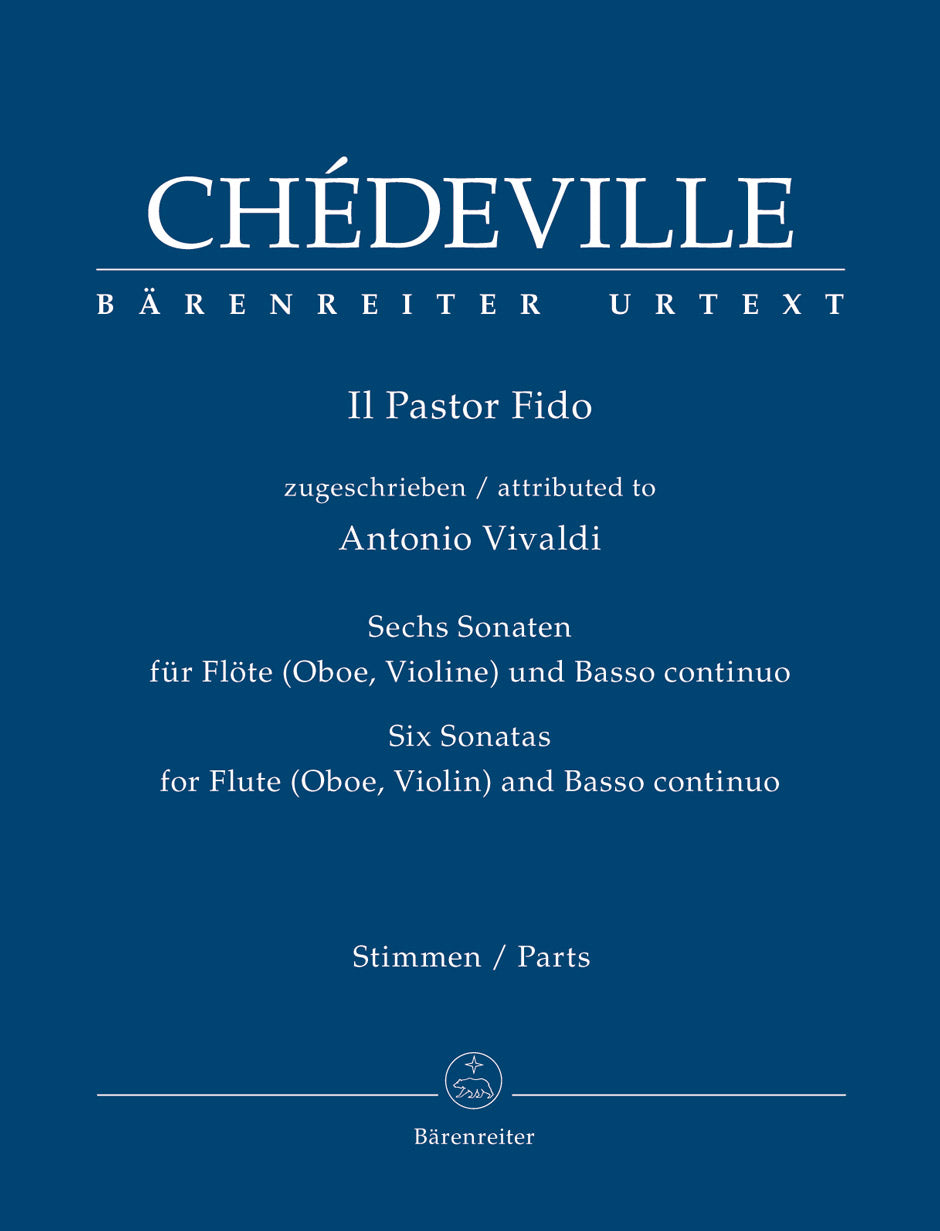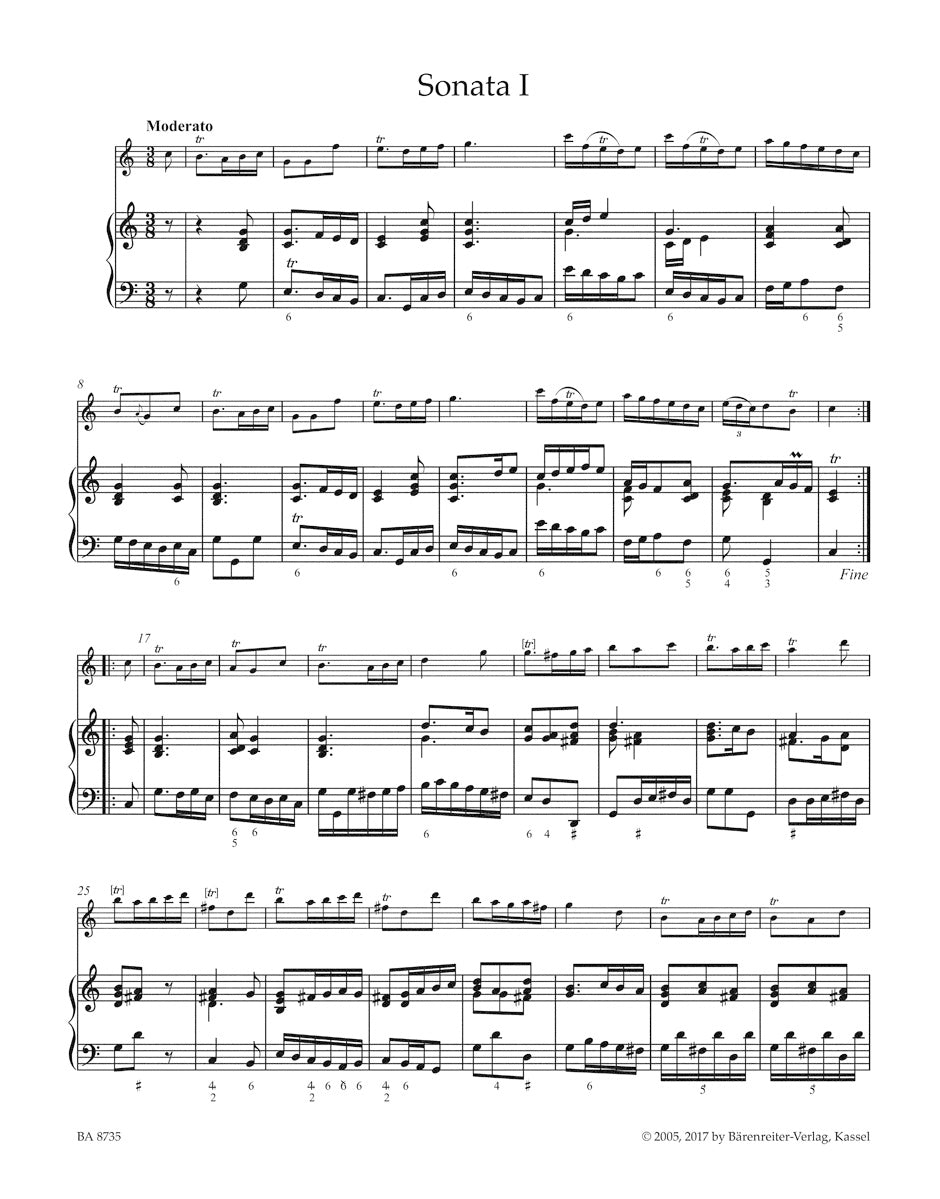Chédeville: Il Pastor Fido - 6 Sonatas for Violin (Flute or Oboe) and Basso Continuo
Attributed to Antonio Vivaldi
In stock and typically ships within 1 business day.
- Composer: Nicolas Chédeville (1705-1782)
- Editor: Federico Maria Sardelli
- Instrumentation: Basso continuo, Violin (Flute or Oboe)
- Work: Sonatas 1-6
- ISMN:
- Size: 9.6 x 12.2 inches
- Pages: 117
- Urtext / Critical Edition
Description
It was in 1990 – more than 250 years after the publication of "Il Pastor Fido" – that the masterful forgery was exposed: not Antonio Vivaldi but in fact the French composer Nicolas Chédeville (1705–1782) turned out to be the true author of this sonata collection, which was subtly foisted upon the unsuspecting Parisian public in the middle of the 18th Century, at the height of Vivaldi's popularity in France. Vivaldi himself never came to know anything of the misuse of his name and musical intellectual property.
"Il Pastor Fido" offers a ‘Mélange‘ of very simple, movements and gallantries in the French style, as well as some throughout original movements of exceptionally fine music and powerful compositional ideas. Approximately ninety percent of "Il Pastor Fido" is Chédeville's own work; for the remainder, he adopted and built upon themes (or those which he thought to be) by Vivaldi, all the while demonstrating a thorough understanding of the style that he was striving to imitate.
As with all of Chédeville's other works and numerous other collections from the time, the original title mentions a series of instruments, all of which are suitable for performing these sonatas: the musette, hurdy-gurdy, flute, oboe and violin. Whilst the first two, which were popular instruments at the time and corresponded to the Arcadian sensibilities of the Age of Enlightenment, have long since been out of fashion, the flute is particularly well suited today to reflect the pastoral character – noted in the title of the collection ("Il Pastor Fido": the Faithful Shepherd) – of the music.
This edition replaces the older HM135.
Publishers use a lot of words to describe what they sell, and we know it can be confusing. We've tried to be as clear as possible to make sure you get exactly what you are looking for. Below are descriptions of the terms that we use to describe the various formats that music often comes in.
Choral Score
A score for vocalists that only contains the vocal lines. The instrumental parts are not there for reference. Generally, cheaper than a vocal score and requires multiple copies for purchase.
Facsimile
Reproductions of the original hand-written scores from the composer.
Full Score
For ensemble music, this indicates that the edition contains all parts on a single system (there are not separate parts for each player). In larger ensembles, this is for the conductor.
Hardcover
Hardbound. Generally either linen-covered or half-leather.
Orchestral Parts
Similar to a wind set, this is a collection of parts. In the case of strings, the numbers listed are the number of copies included, though generally these are available individually (often with minimum quantities required).
Paperback
When publishers offer multiple bindings (e.g. hardcover) or study scores, this is the "standard" version. If you're planning to play the music, this is probably what you want.
Performance / Playing Score
A score of the music containing all parts on one system, intended for players to share. There are not separate parts for each player.
Set of Parts
For ensemble music, this indicates that there are separate individual parts for each player.
Solo Part with Piano Reduction
For solo pieces with orchestra, this is a version that contains a piano reduction of the orchestra parts. For piano pieces, two copies are typically needed for performance.
Study Score
A small (think choral size) copy of the complete score meant for studying, and not playing. They make great add-ons when learning concertos and small chamber works.
Vocal Score
A score prepared for vocalists that includes the piano/organ part or a reduction of the instrumental parts.
Wind Set
For orchestral music, this is a collection of wind and percussion parts. The specific quantities of each instrument are notated.
With Audio
In addition to the printed music, the edition contains recordings of the pieces. This may be an included CD, or access to files on the internet.
With / Without Fingering (Markings)
Some publishers prepare two copies - a pure Urtext edition that includes no fingering (or bowing) suggestions and a lightly edited version that includes a minimal number of editorial markings.






